Research on the Structure Optimization Design of Automobile Intake Pipe
Abstract
:1. Introduction
2. Materials and Methods
3. Model Establishment and Grid Division
4. Results
4.1. Numerical Simulation Results and Analysis of the Model
4.2. Optimization and Analysis of Intake Dirty Pipe Structure
4.3. Model Flow Resistance Test of Intake Pipe
4.3.1. Test Equipment, Materials, and Methods
4.3.2. Test Results and Discussion
5. Conclusions
Author Contributions
Funding
Acknowledgments
Conflicts of Interest
References
- Dhital, N.B.; Yang, H.-H.; Wang, L.-C.; Hsu, Y.-T.; Zhang, H.-Y.; Young, L.-H.; Lu, J.-H. VOCs emission characteristics in motorcycle exhaust with different emission control devices. Atmos. Pollut. Res. 2019, 10, 1498–1506. [Google Scholar] [CrossRef]
- Karthickeyan, V. Effect of combustion chamber bowl geometry modification on engine performance, combustion and emission characteristics of biodiesel fuelled diesel engine with its energy and exergy analysis. Energy 2019, 176, 830–852. [Google Scholar] [CrossRef]
- Khoa, N.X.; Lim, O. The effects of combustion duration on residual gas, effective release energy, engine power and engine emissions characteristics of the motorcycle engine. Appl. Energy 2019, 248, 54–63. [Google Scholar] [CrossRef]
- Bovendeerd, P.; Van Steenhoven, A.; Van de Vosse, F.; Vossers, G. Steady entry flow in a curved pipe. J. Fluid Mech. 1987, 177, 233–246. [Google Scholar] [CrossRef]
- Giannakopoulos, G.; Frouzakis, C.E.; Boulouchos, K.; Fischer, P.F.; Tomboulides, A. Direct numerical simulation of the flow in the intake pipe of an internal combustion engine. Int. J. Heat Fluid Flow 2017, 68, 257–268. [Google Scholar] [CrossRef]
- Sekavčnik, M.; Ogorevc, T.; Škerget, L. CFD analysis of the dynamic behaviour of a pipe system. Forsch. Ingenieurwes. 2006, 70, 139–144. [Google Scholar] [CrossRef]
- Ceviz, M.; Akın, M. Design of a new SI engine intake manifold with variable length plenum. Energy Convers. Manag. 2010, 51, 2239–2244. [Google Scholar] [CrossRef]
- Costa, R.C.; Hanriot, S.d.M.; Sodré, J.R. Influence of intake pipe length and diameter on the performance of a spark ignition engine. J. Braz. Soc. Mech. Sci. Eng. 2014, 36, 29–35. [Google Scholar] [CrossRef]
- Manmadhachary, A.; Kumar, M.S.; Kumar, Y.R. Design & manufacturing of spiral intake manifold to improve Volument efficiency of injection diesel engine byAM process. Mater. Today Proc. 2017, 4, 1084–1090. [Google Scholar]
- Sivashankar, M.; Balaji, G.; Barathraj, R.; Thanigaivelan, V. Phenomena of brake specific fuel consumption and volumetric efficiency in CI engine by modified intake runner length. In Proceedings of the IOP Conference Series: Materials Science and Engineering, Kattankulathur, India, 22–24 March 2018; IOP Publishing: Bristol, UK, 2018; p. 012086. [Google Scholar]
- Guo, S.; Huang, S.; Chi, M. Optimized design of engine intake manifold based on 3D scanner of reverse engineering. EURASIP J. Image Video Process. 2018, 2018, 70. [Google Scholar] [CrossRef]
- Jiang, F.; Li, M.; Wen, J.; Tan, Z.; Zhou, W. Optimization analysis of engine intake system based on coupling matlab-simulink with GT-power. Math. Probl. Eng. 2021, 2021, 6673612. [Google Scholar] [CrossRef]
- Mohamad, B.; Ali, M.Q.; Neamah, H.A.; Zelentsov, A.; Amroune, S. Fluid dynamic and acoustic optimization methodology of a formula-student race car engine exhaust system using multilevel numerical CFD models. Diagnostyka 2020, 21, 103–111. [Google Scholar] [CrossRef]
- Xu, P.; Jiang, H.; Zhao, X. CFD analysis of a gasoline engine exhaust pipe. J. Appl. Mech. Eng. 2016, 5, 7.1–7.7. [Google Scholar]
- Zhang, C.; Sun, C.; Wu, M.; Lu, K. Optimisation design of SCR mixer for improving deposit performance at low temperatures. Fuel 2019, 237, 465–474. [Google Scholar] [CrossRef]
- Silva, E.; Ochoa, A.; Henríquez, J. Analysis and runners length optimization of the intake manifold of a 4-cylinder spark ignition engine. Energy Convers. Manag. 2019, 188, 310–320. [Google Scholar] [CrossRef]
- Hanriot, S.d.M.; Queiroz, J.M.; Maia, C.B. Effects of variable-volume Helmholtz resonator on air mass flow rate of intake manifold. J. Braz. Soc. Mech. Sci. Eng. 2019, 41, 79. [Google Scholar] [CrossRef]
- Mezher, H.; Chalet, D.; Migaud, J.; Chesse, P. Frequency based approach for simulating pressure waves at the inlet of internal combustion engines using a parameterized model. Appl. Energy 2013, 106, 275–286. [Google Scholar] [CrossRef]
- Sharma, V.; Dhauni, S.; Chawla, V. Design and manufacturing of air intake assembly for formula SAE vehicle. Mater. Today Proc. 2021, 43, 58–64. [Google Scholar] [CrossRef]
- Mohamad, B.; Karoly, J.; Zelentsov, A.; Amroune, S. A hybrid method technique for design and optimization of Formula race car exhaust muffler. Int. Rev. Appl. Sci. Eng. 2020, 11, 174–180. [Google Scholar] [CrossRef]
- He, X.; Brem, B.T.; Bahk, Y.K.; Kuo, Y.-Y.; Wang, J. Effects of relative humidity and particle type on the performance and service life of automobile cabin air filters. Aerosol Sci. Technol. 2016, 50, 542–554. [Google Scholar] [CrossRef]
- Li, J.; Li, M.; Shen, F.; Zou, Z.; Yao, M.; Wu, C.-y. Characterization of biological aerosol exposure risks from automobile air conditioning system. Environ. Sci. Technol. 2013, 47, 10660. [Google Scholar] [CrossRef]
- Manikantan, R.; Gunasekaran, E.J. Modeling and analysing of air filter in air intake system in automobile engine. Adv. Mech. Eng. 2013, 5, 654396. [Google Scholar] [CrossRef]
- Yerram, R.; Prasad, N.; Malathkar, P.R.; Halbe, V.; Murthy, S.D. Optimization of Intake System and Filter of an Automobile Using CFD Analysis; Quality Engineering & Software Technologies (QUEST): Bangalore, India, 2006. [Google Scholar]
- Srinivasulu, K.; Srikanth, D.; Rafi, K.; Ramanjaneeyulu, B. Optimization of Air Filter in an Automobile Diesel Engine by Using CFD Analysis. IOSR J. Mech. Civ. Eng. 2016, 13, 78–89. [Google Scholar]
- HoseopSong, B.Y.; Cho, H. A study on the optimum shape of automobile air cleaner diffuser. Int. J. Appl. Eng. Res. 2017, 12, 3377–3381. [Google Scholar]
- Gan, H.-B.R.; Bakar, N.Z.A.; Dawood, N.F.S.; Rosli, M.A. Design improvements of an automotive air intake system. In Proceedings of the AIP Conference Proceedings, Selangor Darul Ehsan, Malaysia, 27 November 2020; p. 020008. [Google Scholar]
- Liu, X.; Yan, H.J.; Tian, N.; Zhao, G. CFD Simulation Analysis and Research Based on Engine Air Intake System of Automotive; SPIE: Bellingham, WA, USA, 2017; Volume 10322. [Google Scholar]
- Toma, M.; Stan, C.; Fileru, I. The restriction produced by the air filtration system versus the restriction produced by the air filter. MATEC Web Conf. 2018, 178, 09002. [Google Scholar] [CrossRef]
- Xie, J.; Liu, Z. Structural optimization on the design of an automobile engine intake pipe. J. Theor. Appl. Mech. 2022, 60, 449–461. [Google Scholar] [CrossRef]
- Mariotti, A.; Grozescu, A.; Buresti, G.; Salvetti, M. Separation control and efficiency improvement in a 2D diffuser by means of contoured cavities. Eur. J. Mech.-B/Fluids 2013, 41, 138–149. [Google Scholar] [CrossRef]
- Mariotti, A.; Buresti, G.; Salvetti, M. Use of multiple local recirculations to increase the efficiency in diffusers. Eur. J. Mech.-B/Fluids 2015, 50, 27–37. [Google Scholar] [CrossRef]
- Nunes, M.M.; Junior, A.C.B.; Oliveira, T.F. Systematic review of diffuser-augmented horizontal-axis turbines. Renew. Sustain. Energy Rev. 2020, 133, 110075. [Google Scholar] [CrossRef]
- Matsushima, T.; Takagi, S.; Muroyama, S. Characteristics of a highly efficient propeller type small wind turbine with a diffuser. Renew. Energy 2006, 31, 1343–1354. [Google Scholar] [CrossRef]
- Sobol, I.M. Global sensitivity indices for nonlinear mathematical models and their Monte Carlo estimates. Math. Comput. Simul. 2001, 55, 271–280. [Google Scholar] [CrossRef]

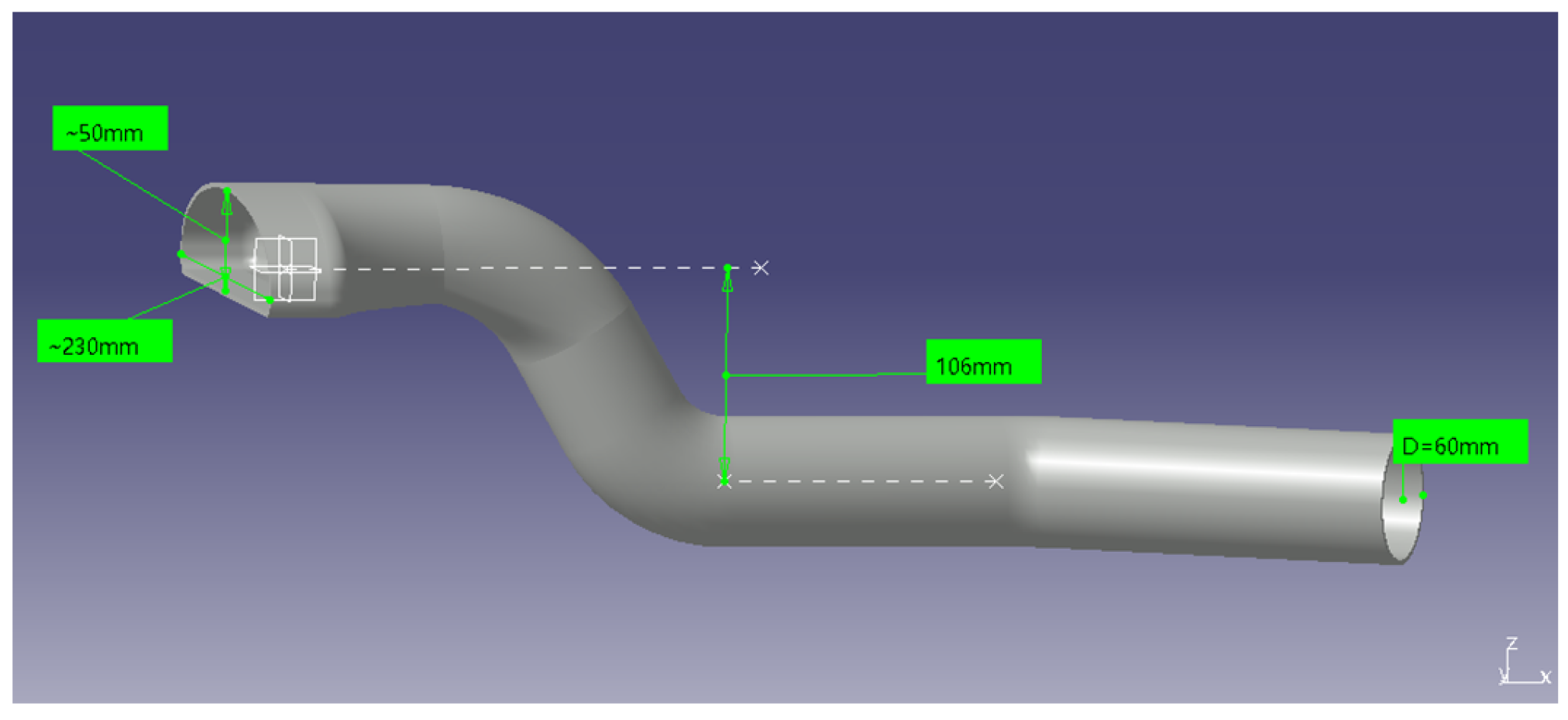
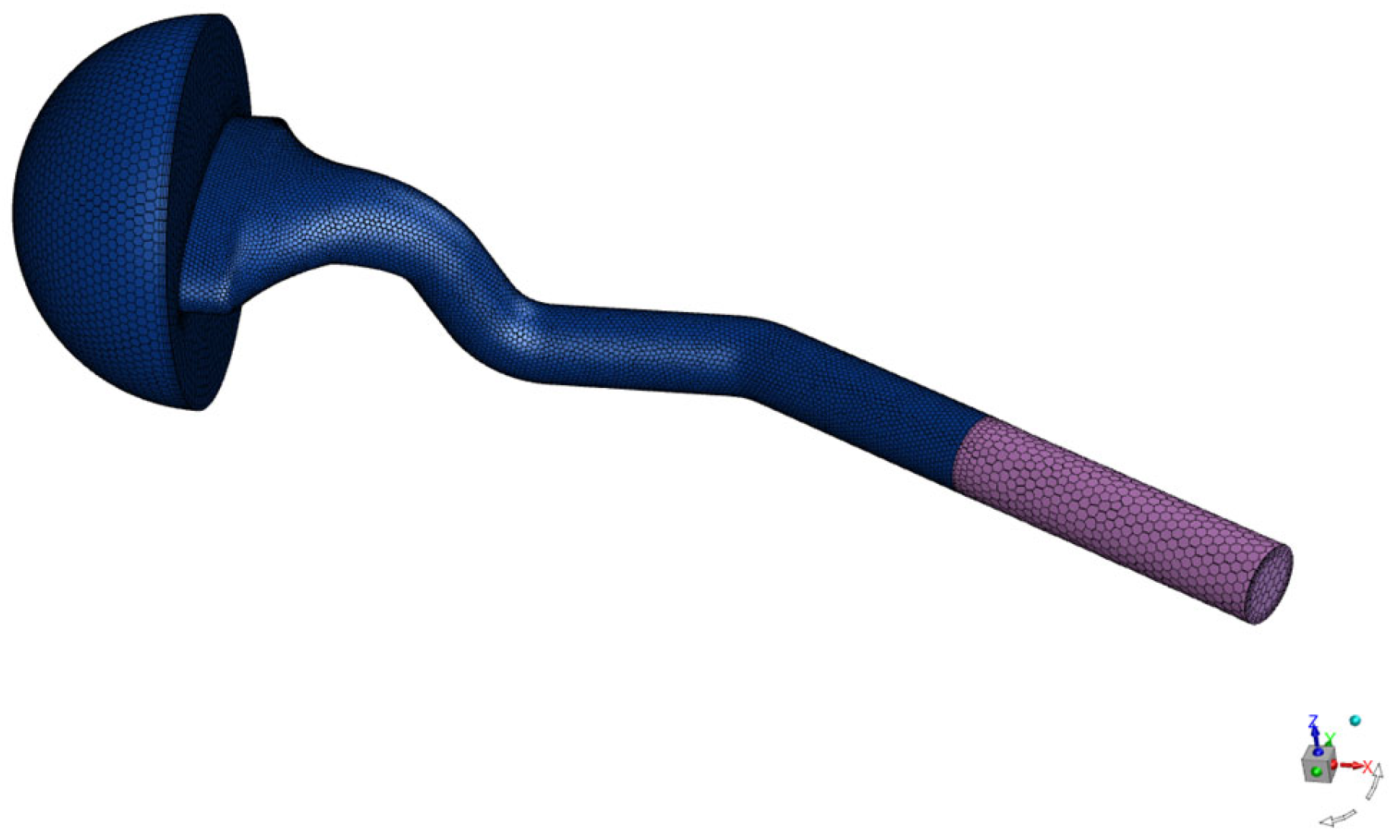

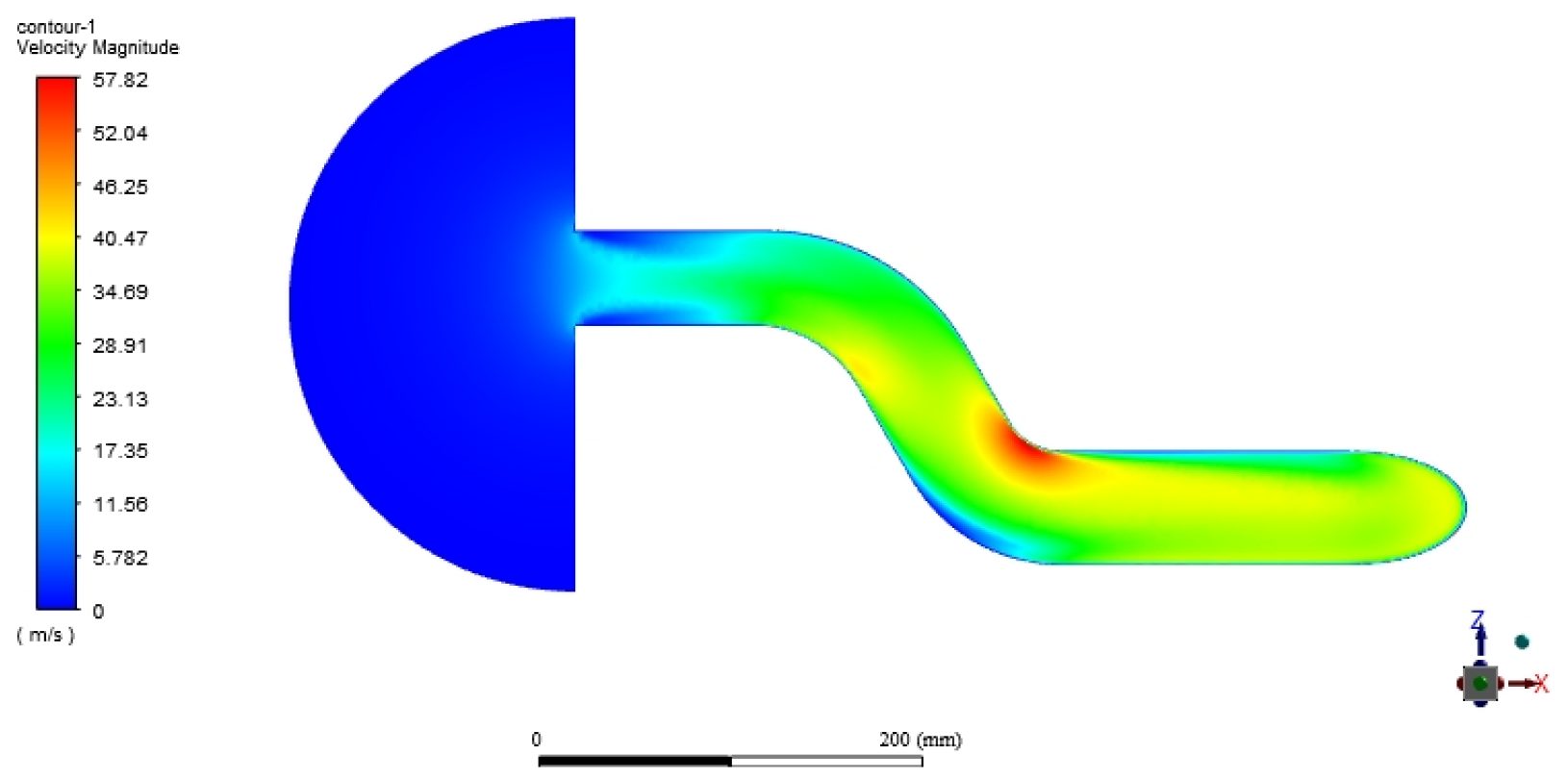
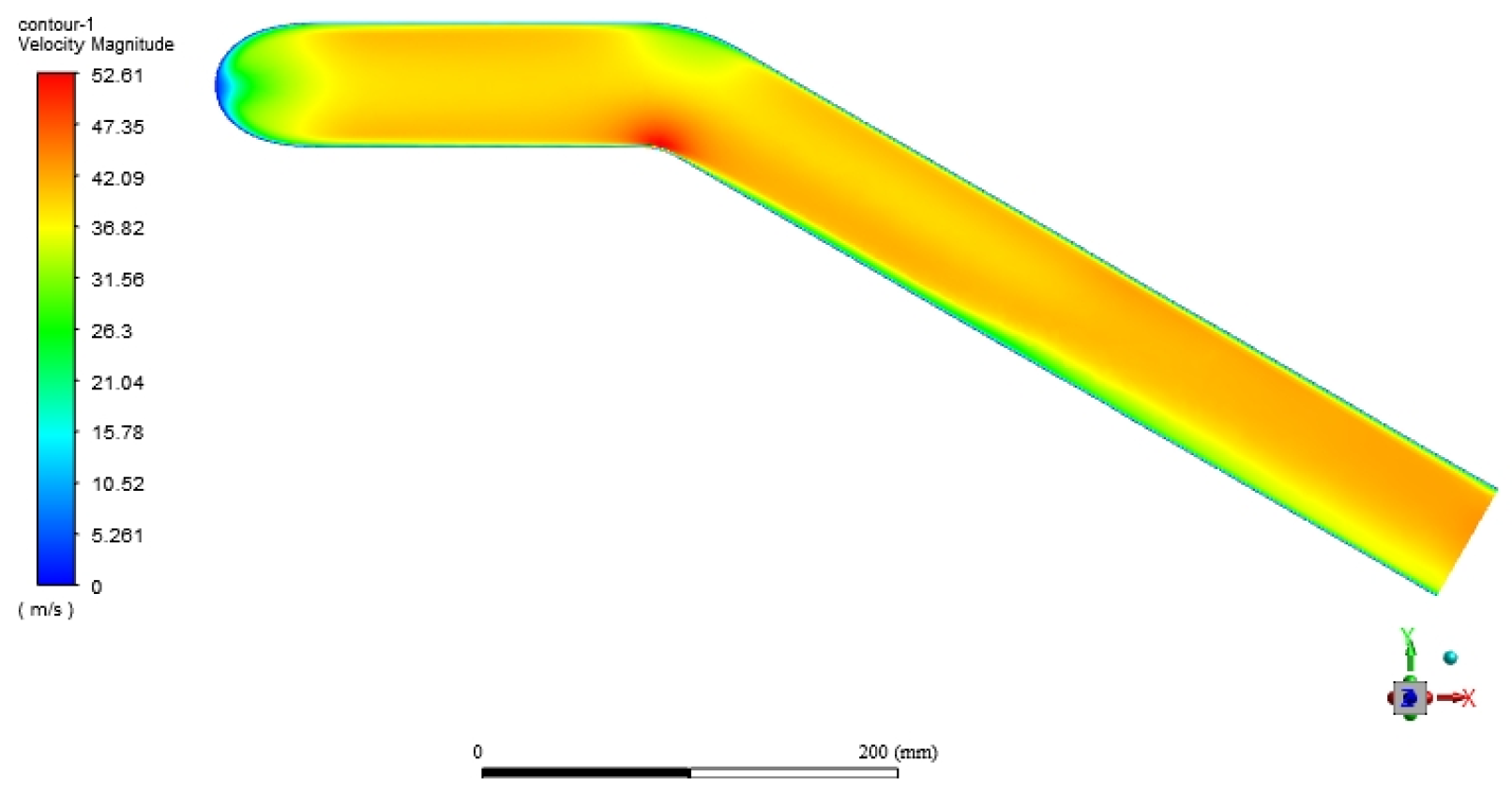
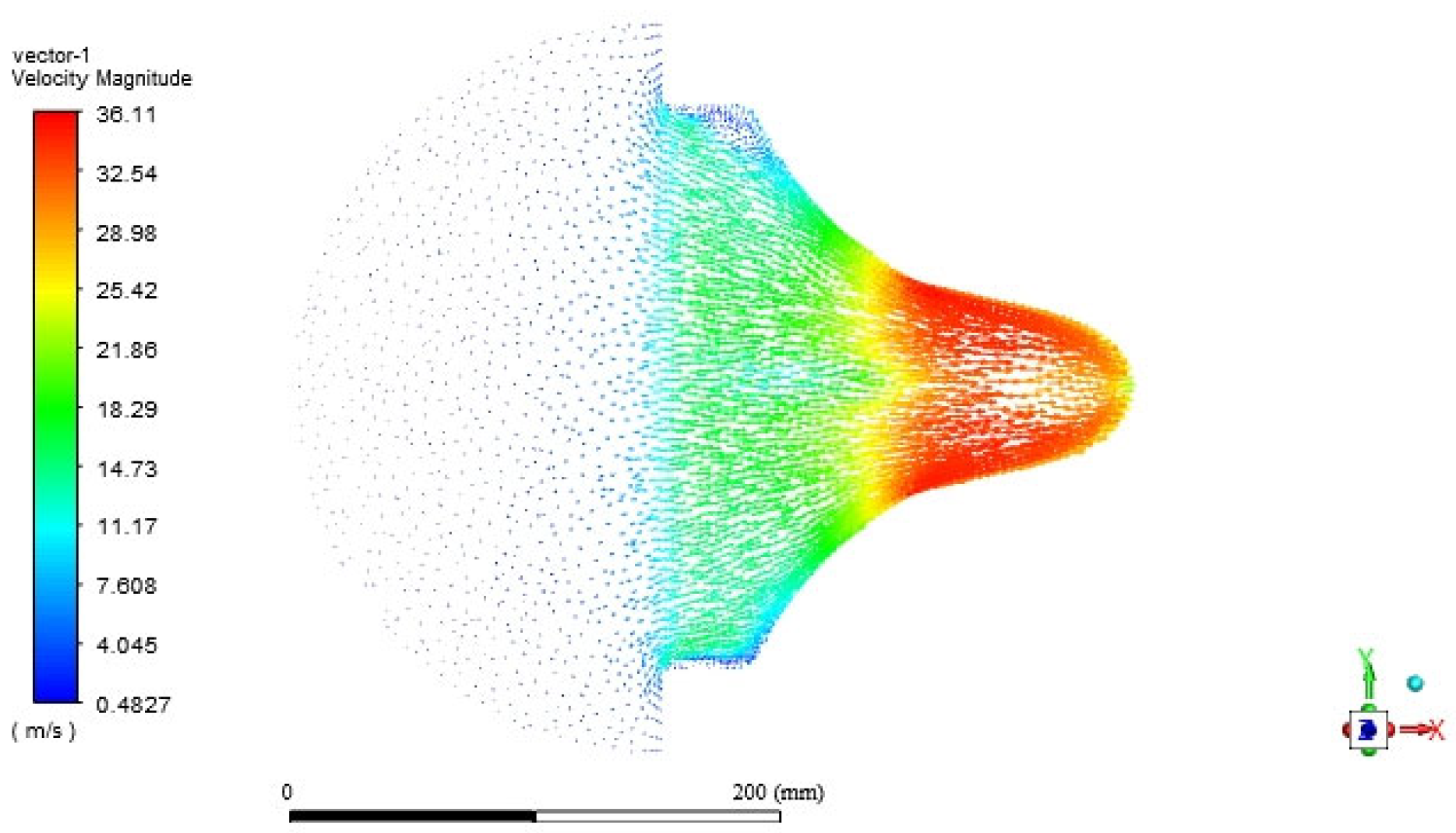
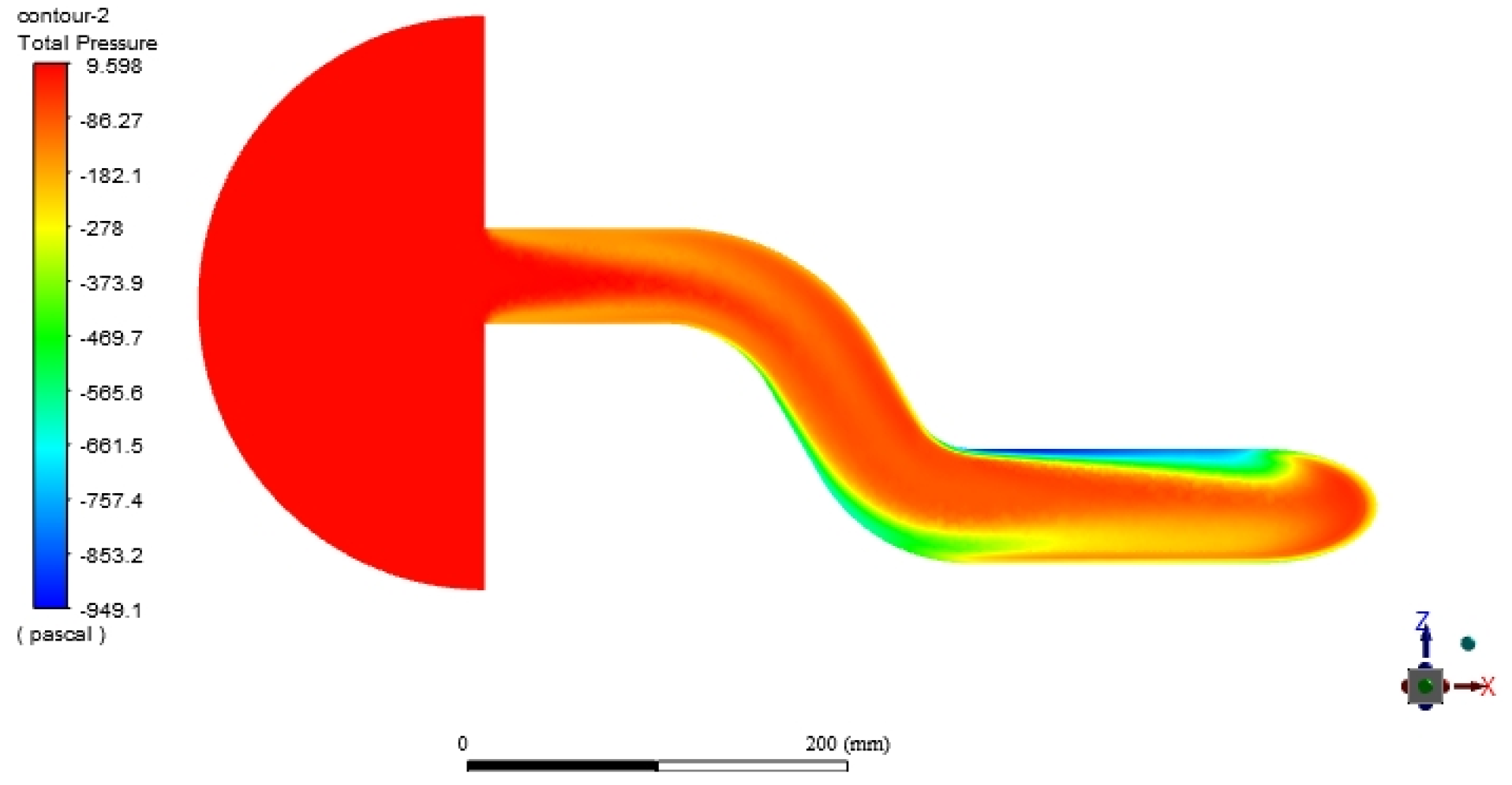
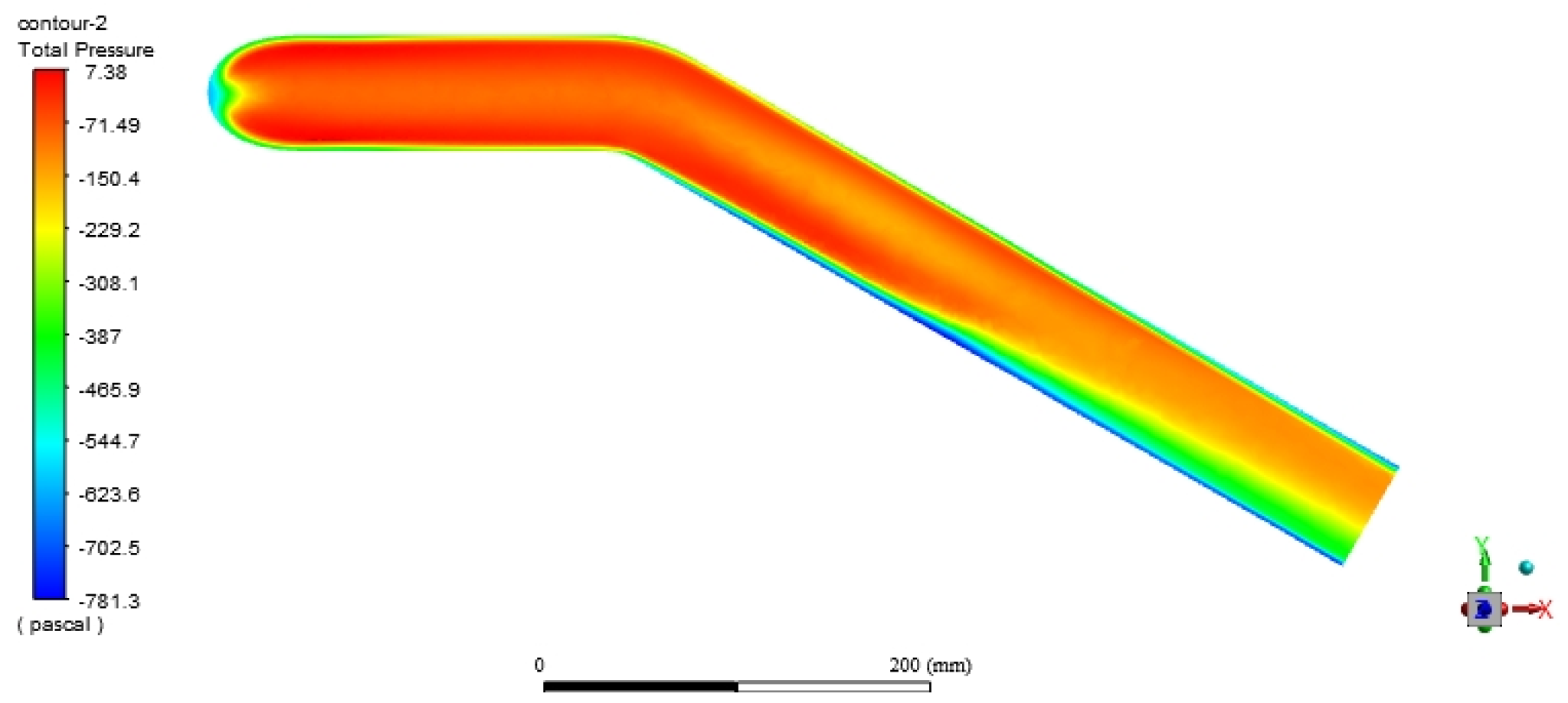
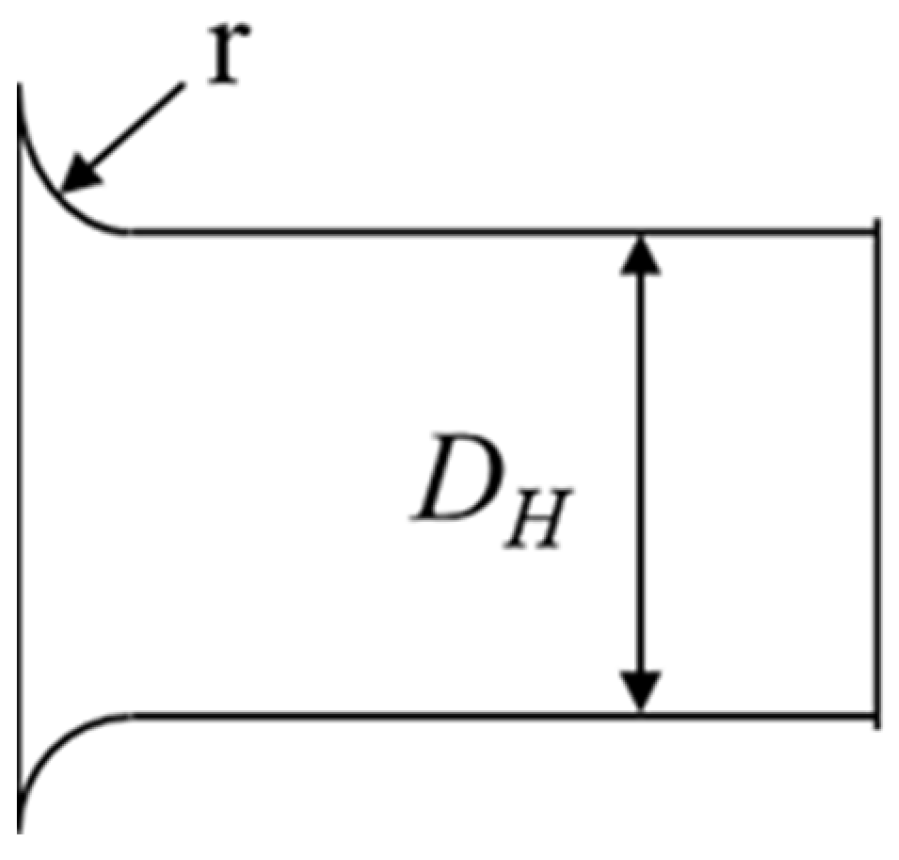

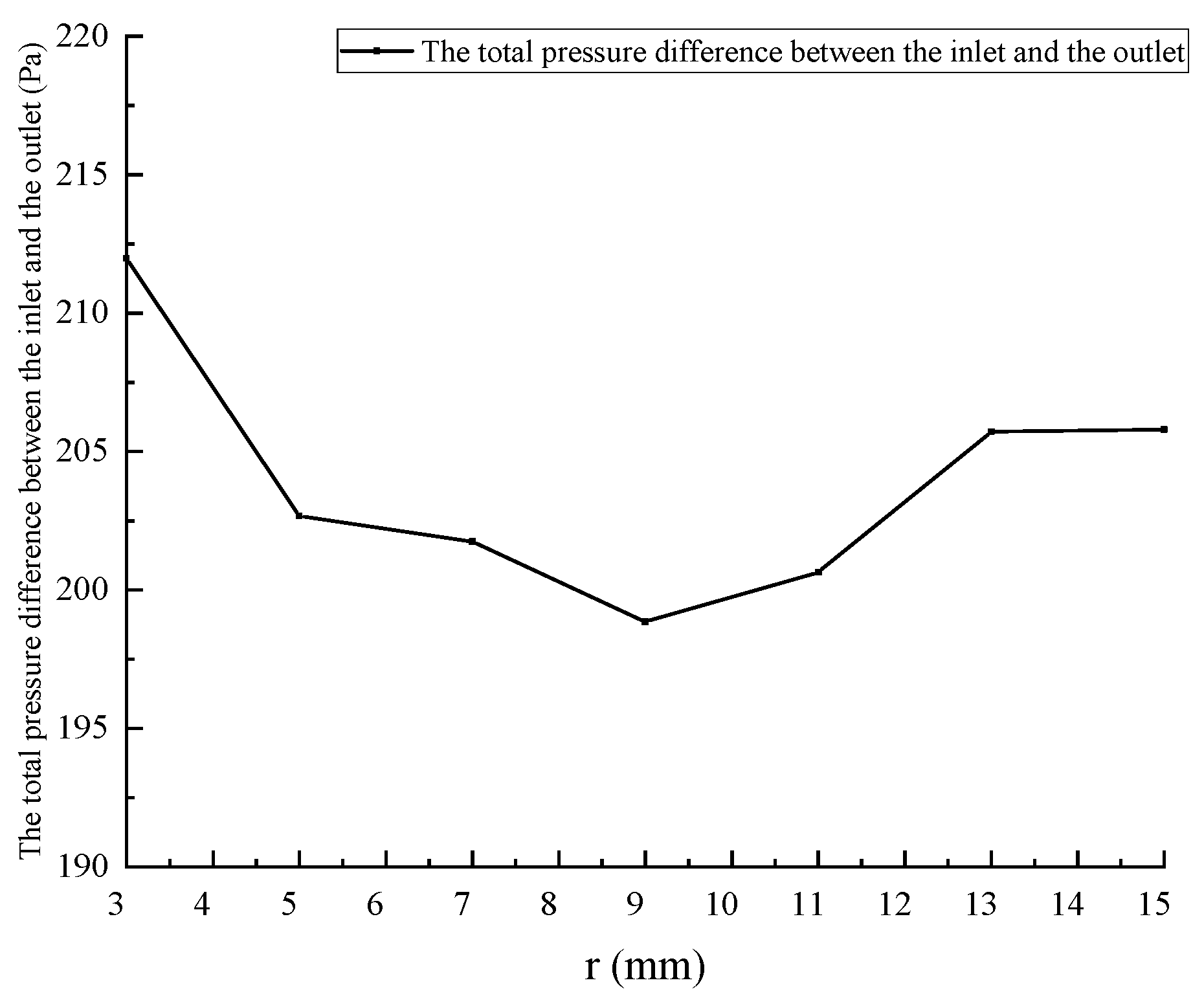
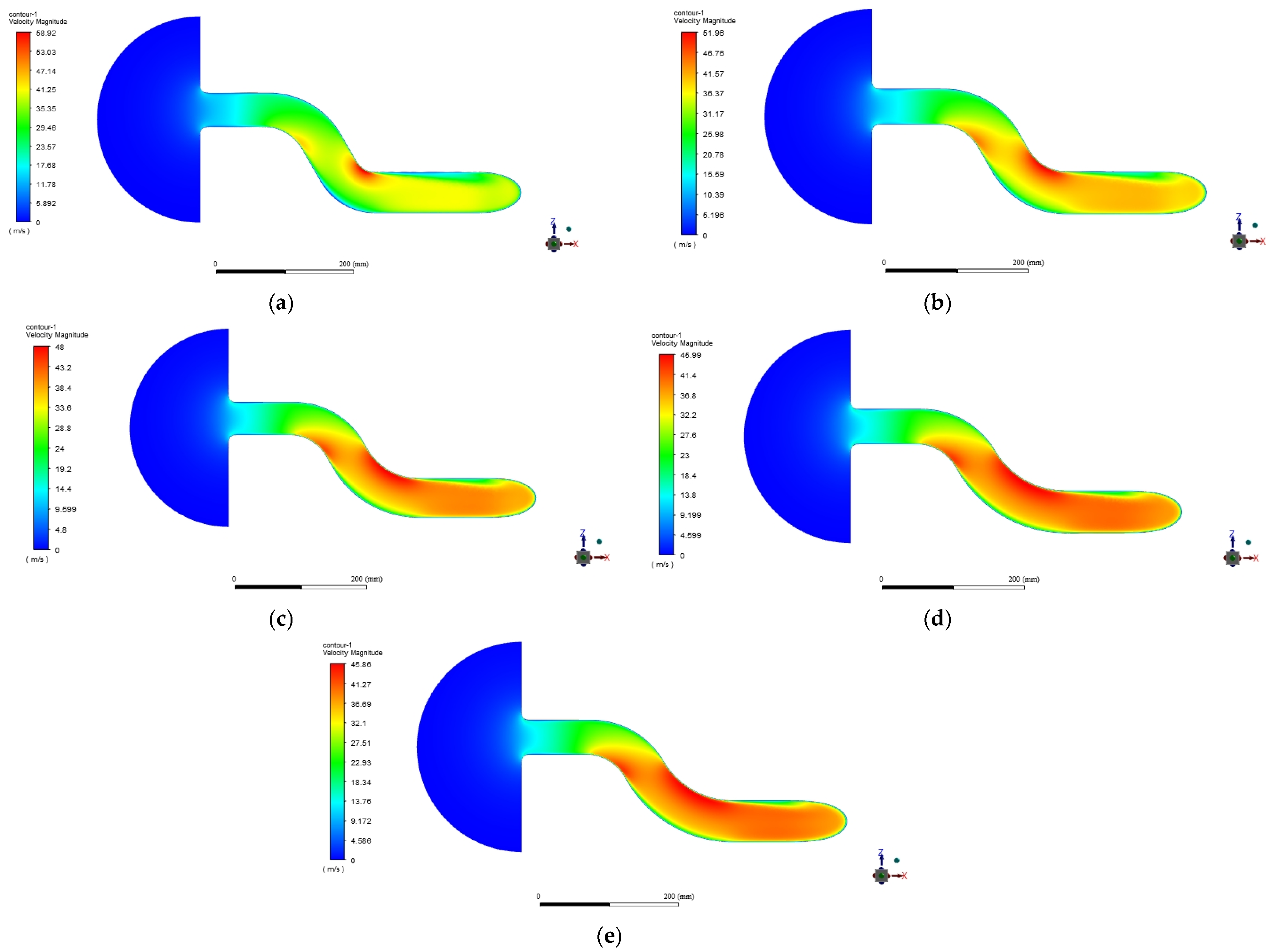

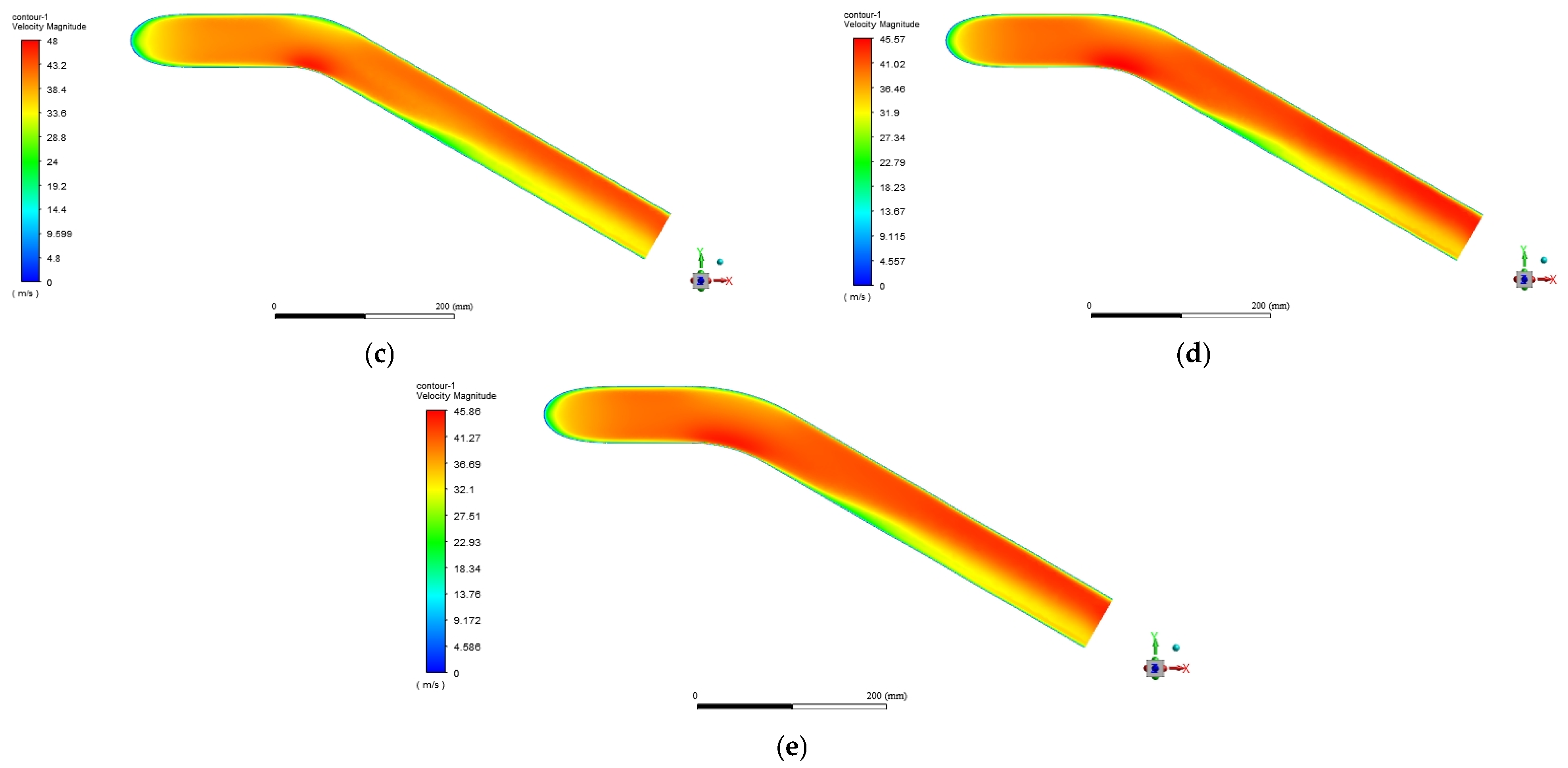
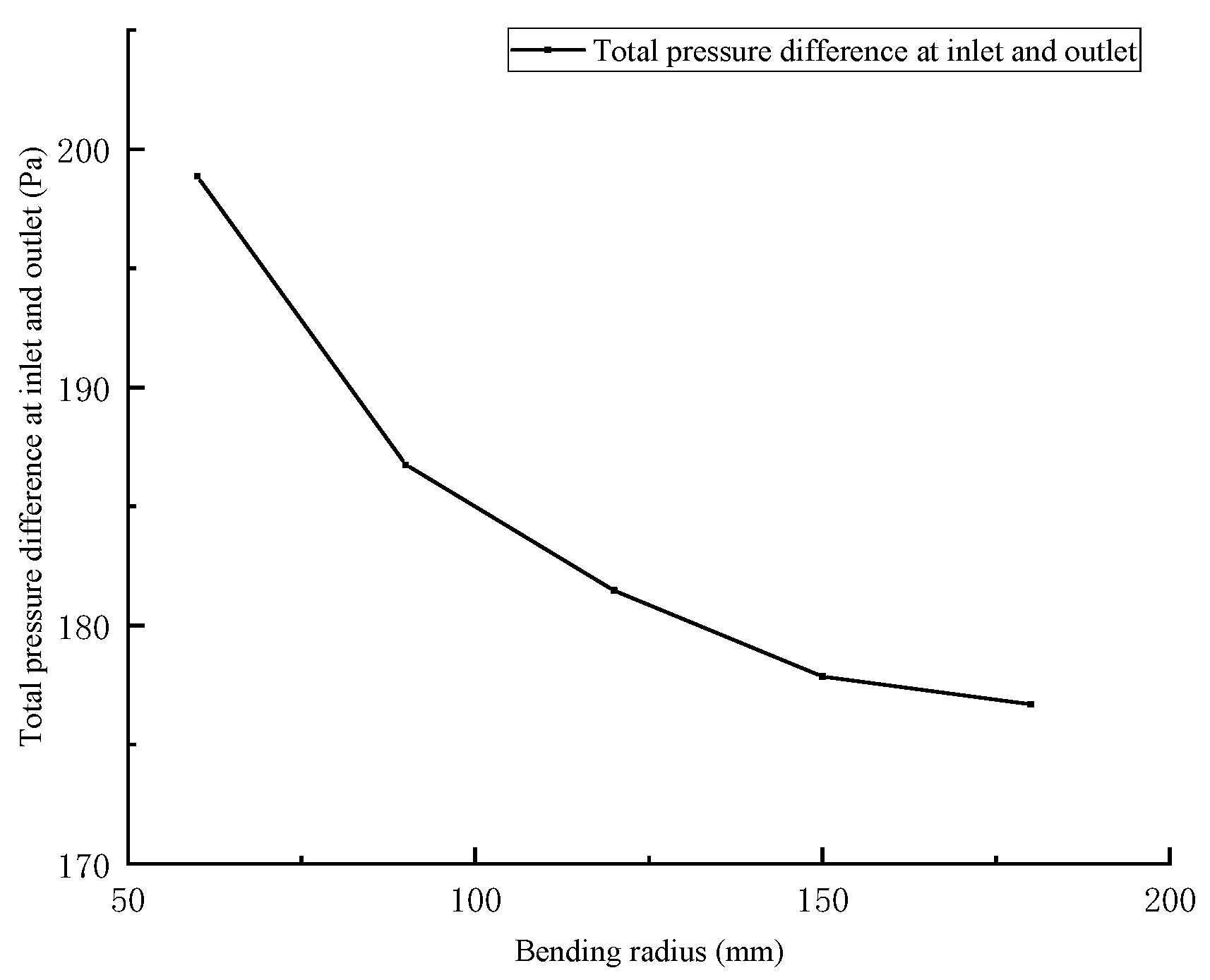



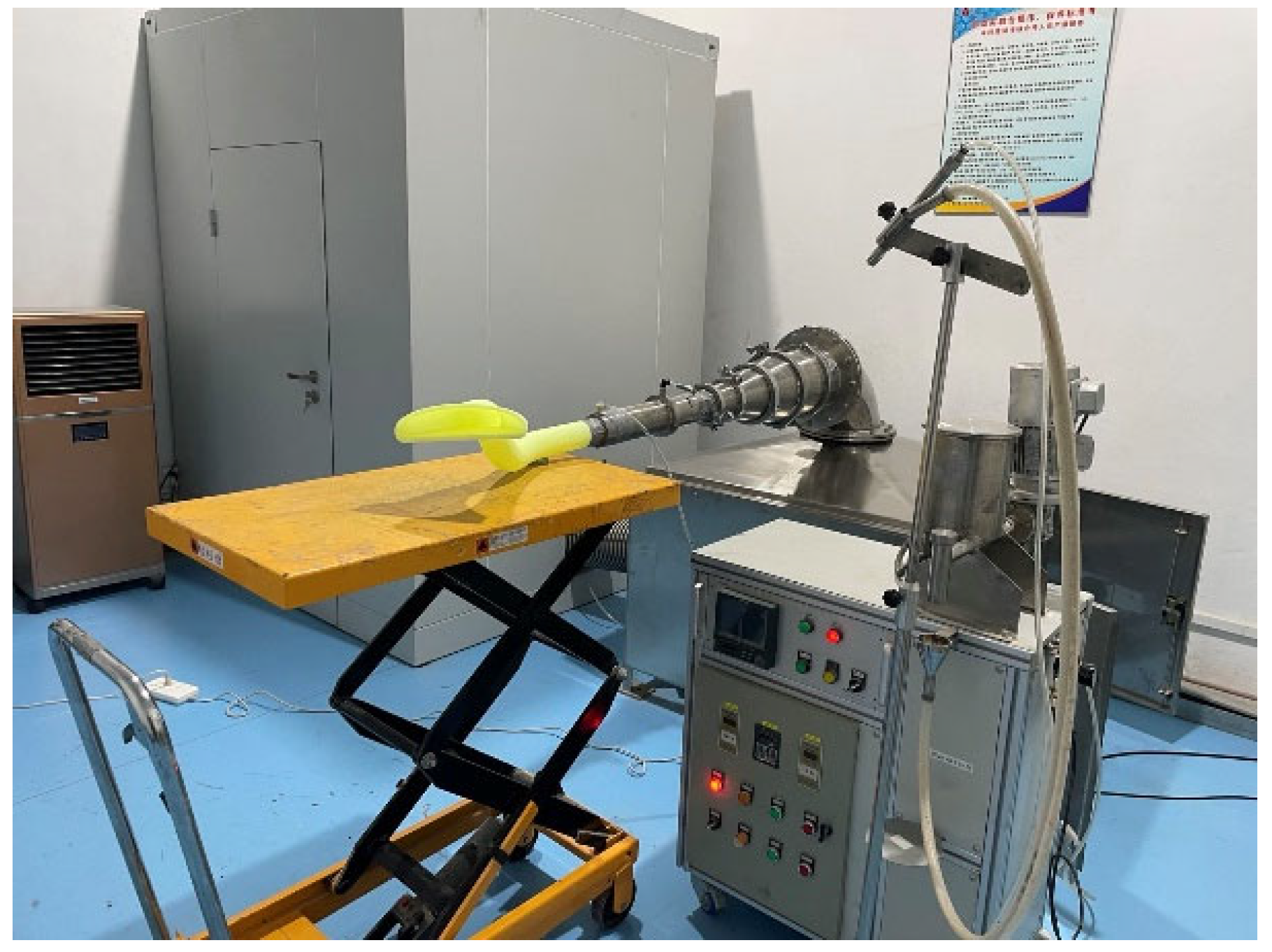
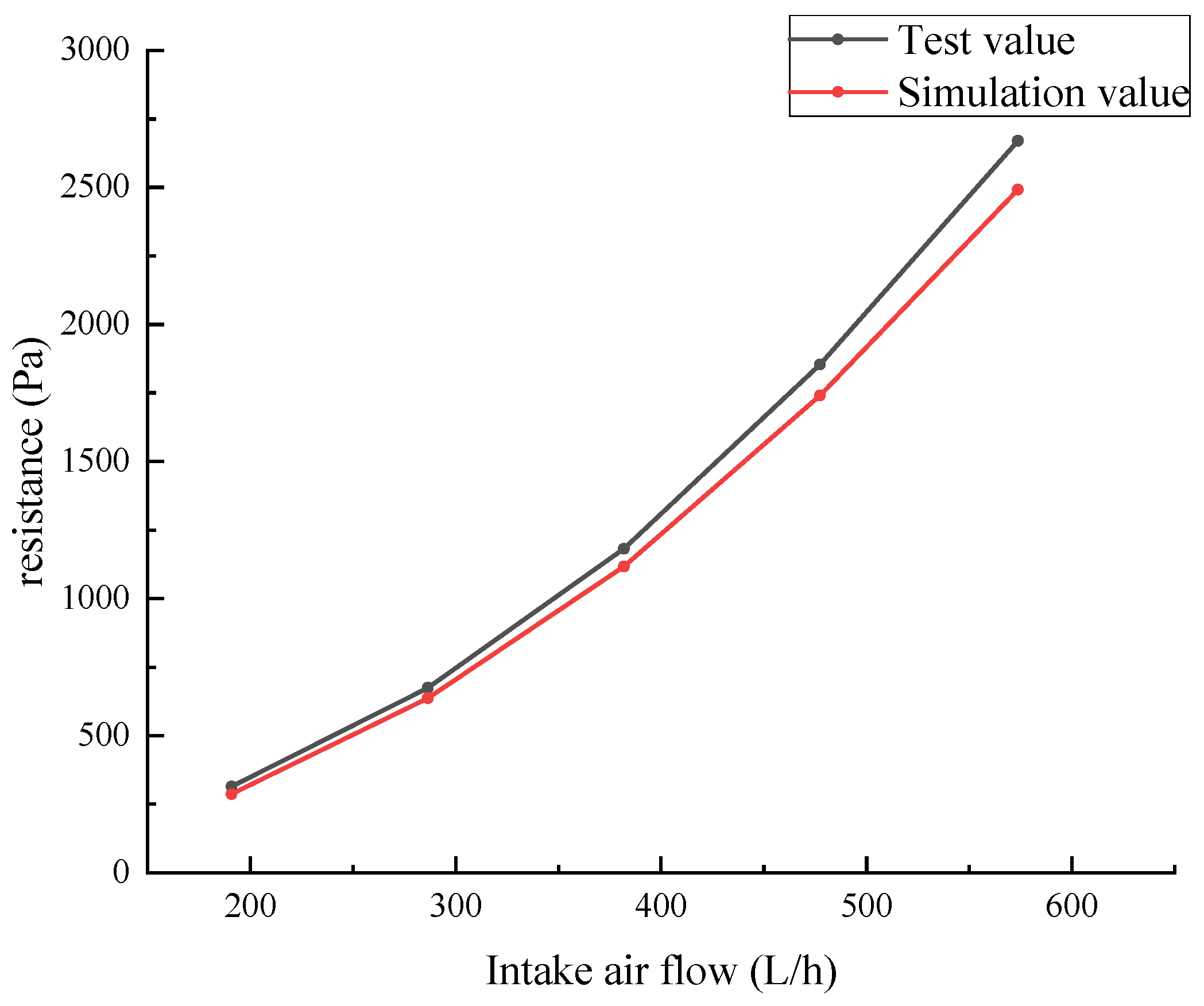
| Area | Boundary Type | Boundary Condition |
|---|---|---|
| Inlet | Pressure inlet | Total pressure is 0 Pa, turbulence intensity is 4.11%, hydraulic diameter is 76 mm |
| Outlet | Mass flow outlet | Mass flow rate is 0.1227555 kg/s |
| Model before Performance Improvement | Model after Performance Improvement | ||
|---|---|---|---|
| Intake Air Flow (L/h) | Average Resistance (Pa) | Intake Air Flow (L/h) | Average Resistance (Pa) |
| 190.93 | 314.66 | 190.81 | 287.12 |
| 286.62 | 674.58 | 286.38 | 637.04 |
| 382.13 | 1181.72 | 381.83 | 1117.14 |
| 477.68 | 1853.51 | 477.36 | 1741.26 |
| 574.14 | 2670.29 | 573.75 | 2491.76 |
Disclaimer/Publisher’s Note: The statements, opinions and data contained in all publications are solely those of the individual author(s) and contributor(s) and not of MDPI and/or the editor(s). MDPI and/or the editor(s) disclaim responsibility for any injury to people or property resulting from any ideas, methods, instructions or products referred to in the content. |
© 2023 by the authors. Licensee MDPI, Basel, Switzerland. This article is an open access article distributed under the terms and conditions of the Creative Commons Attribution (CC BY) license (https://creativecommons.org/licenses/by/4.0/).
Share and Cite
Li, J.; Deng, Z.; Ran, C. Research on the Structure Optimization Design of Automobile Intake Pipe. Appl. Sci. 2023, 13, 6505. https://doi.org/10.3390/app13116505
Li J, Deng Z, Ran C. Research on the Structure Optimization Design of Automobile Intake Pipe. Applied Sciences. 2023; 13(11):6505. https://doi.org/10.3390/app13116505
Chicago/Turabian StyleLi, Jingsong, Zehan Deng, and Chao Ran. 2023. "Research on the Structure Optimization Design of Automobile Intake Pipe" Applied Sciences 13, no. 11: 6505. https://doi.org/10.3390/app13116505




